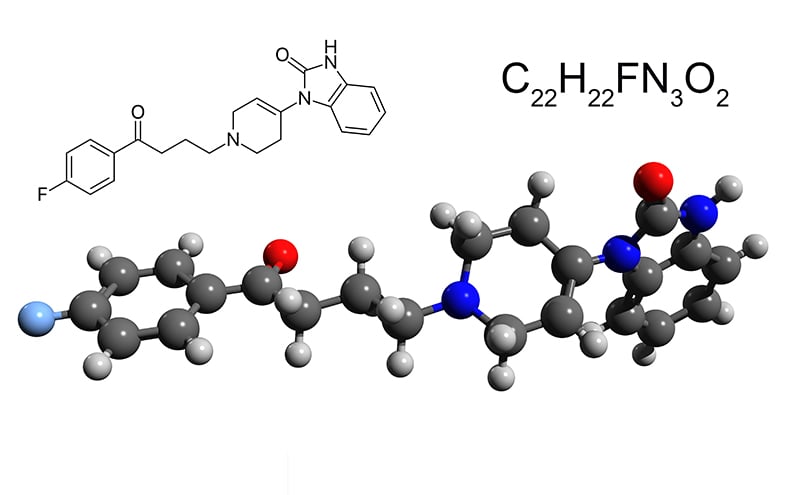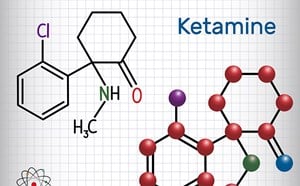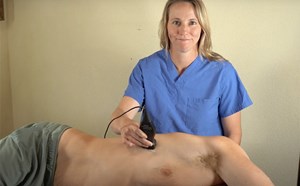
May 19, 2020
Oldie but a Goodie: 10 Pearls of Droperidol
- Dopamine antagonist (D2-R antagonist) from the butyrophenone family, a class of medications commonly known for their antipsychotic effects.1
- More rapid onset and greater efficacy than haloperidol when comparing 5 mg droperidol vs 10 mg haloperidol for patients with acute psychosis, as well as for patients who present with agitated behavior in the ED.2,3
- DORM Study (Droperidol or Midazolam) 10 mg IM droperidol has similar efficacy in the reduction of the duration of violent behavior as compared to 10 mg IM midazolam (20 min vs 24 min) BUT required less additional sedation (33% vs 62%) and was associated with less respiratory depression in intoxicated agitated patients.4
- Droperidol is a great agent for the management of acute migraines with an achievement of “mild/none” headache status in 88-100% of patients (87% female study population) with a dosing of 2.5 mg IM repeated every 30 min (7.5 mg max dose).5
- In a dose-ranging study conducted by Silberstein, et al., they witnessed a statistically significant headache relief in 87% of patients with moderate to severe acute migraine with a dose 2.75 mg droperidol IM.6 Additionally, Silberstein, et al., demonstrate complete pain-free response was optimized at 2.75mg (49%) with both higher and lower doses showing less efficacy at preventing headache recurrence and increased side effects among higher doses.6
- Dose recommendation for headache is 2.5 mg – 2.75 mg IM or IV.
- Droperidol illustrated a higher percent reduction in nausea in ED patients in comparison to metoclopramide or prochlorperazine though with more akathisia. Dose recommendation 1.25 mg IM or IV.7
- In the evaluation of patients experiencing vertigo, Irving et al. determined that 2.5 mg droperidol IM at 30 minutes post-administration resulted in relief of symptoms in 86% of patients (an additional 7% improved but required a rescue dose).8
- Although limited data, Lo et al. showed that 50 mcg droperidol added to 1mg morphine q5min administered via a PCA pump resulted in a total reduction in the amount of morphine administered over a 72h post-operative (post-hysterectomy) period compared to morphine alone (33 mg vs 54 mg).9
- Data suggests QT prolongation is minimal and complications rare. The maximum QTc interval prolongations occurred within 60 seconds of injection and did not further increase with time. If concerned for QTc prolongation or patient is susceptible to QTc prolongation obtain an EKG.10
- Bottom Line: Droperidol is a great and safe medication with many applications!
References
- “Droperidol Use in the Emergency Department – What's Old Is New Again.” net - Emergency Medicine Education, 1 Aug. 2019, www.emdocs.net/droperidol-use-in-the-emergency-department-whats-old-is-new-again/.
- Resnick M, Burton BT. Droperidol vs. haloperidol in the initial management of acutely agitated patients. J Clin Psychiatry. 1984;45:298-9.
- Thomas H, Jr., Schwartz E, Petrilli R. Droperidol versus haloperidol for chemical restraint of agitated and combative patients. Ann Emerg Med. 1992;21:407-13.
- Isbister GK, Calver LA, Page CB, Stokes B, Bryant JL, Downes MA. Randomized controlled trial of intramuscular droperidol versus midazolam for violence and acute behavioral disturbance: the DORM study. Ann Emerg Med. 2010;56:392-401 e1.
- Wang SJ, Silberstein SD, Young WB. Droperidol treatment of status migrainosus and refractory migraine. Headache. 1997;37:377-82.
- Silberstein SD, Young WB, Mendizabal JE, Rothrock JF, Alam AS. Acute migraine treatment with droperidol: A randomized, double-blind, placebo-controlled trial. Neurology. 2003;60:315-21.
- Braude D, Soliz T, Crandall C, Hendey G, Andrews J, Weichenthal L. Antiemetics in the ED: a randomized controlled trial comparing 3 common agents. Am J Emerg Med. 2006;24:177-82.
- Irving C, Richman PB, Kaiafas C, Eskin B, Ritter A, Allegra J. Droperidol for the treatment of acute peripheral vertigo. Am J Emerg Med. 1999;17:109-10.
- Lo Y, Chia YY, Liu K, Ko NH. Morphine sparing with droperidol in patient-controlled analgesia. J Clin Anesth. 2005;17:271-5.
- Lo Y, Chia YY, Liu K, Ko NH. Morphine sparing with droperidol in patient-controlled analgesia. J Clin Anesth. 2005;17:271-5.
Christine DeFranco, DO
EM Medical Director of Mental Health and Addiction, EM Physician
Saint Joseph’s University Medical Center, Paterson, NJ


